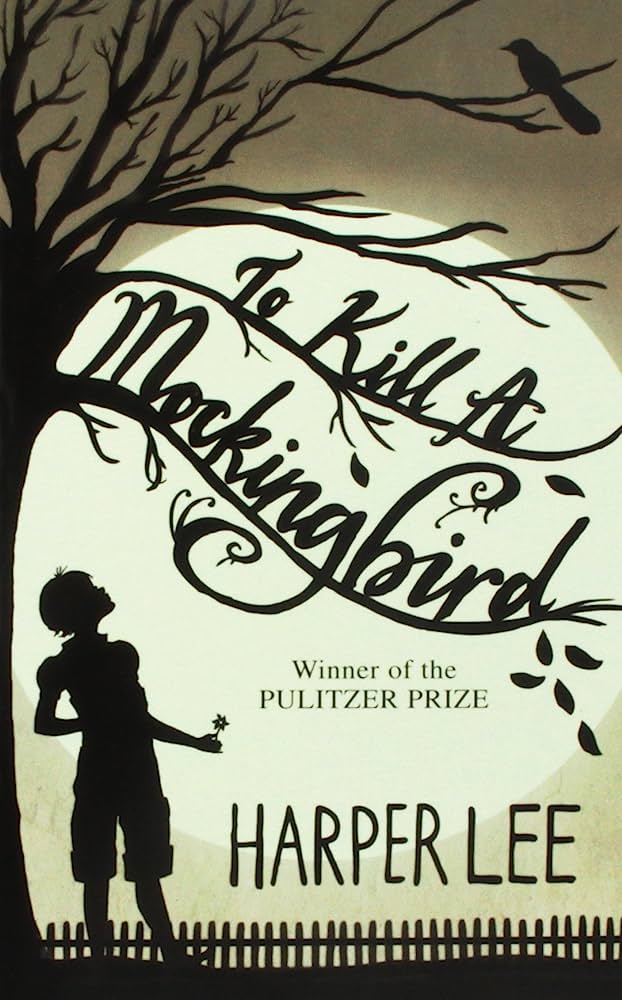We are from Ukraine ![]()
Book Review: “To Kill a Mockingbird” by Harper Lee
In the pantheon of American literature, few novels hold as prominent a place as Harper Lee’s magnum opus, “To Kill a Mockingbird”. Published in 1960, the book has since become an indomitable classic, cherished and studied across generations, cultures, and continents. A profound exploration of racial tension, childhood innocence, and moral integrity, Lee’s work is as timeless as it is relevant.
Harper Lee, a native of Monroeville, Alabama, embedded the essence of the Deep South into her narrative. Born in 1926, Lee’s own childhood experiences during the Great Depression provided a rich backdrop for her evocative portrayal of the Finch family and the fictional town of Maycomb. While she wrote other works, none ever overshadowed this masterpiece which, many argue, encapsulated her most potent observations and insights about human nature and society.
Set in the 1930s, “To Kill a Mockingbird” is narrated by Scout Finch, a young girl who, along with her brother Jem, is being raised by their widowed father, Atticus Finch. The narrative effortlessly weaves tales of childhood adventures with a much darker tale: the trial of Tom Robinson, a black man falsely accused of raping a white woman. Through Scout’s eyes, readers experience the biases, prejudices, and social dynamics of a Southern town steeped in racial divides.
So, why does “To Kill a Mockingbird” remain a must-read for everyone, over six decades after its publication?
Universal Themes
At its core, Lee’s novel delves into themes of innocence, moral righteousness, and the pervasive racial prejudices that tainted American society. By juxtaposing the innocence of childhood with the harsh realities of adult prejudices, Lee makes a compelling commentary on the human condition.
Complex Characters
Lee has an uncanny ability to create multifaceted characters. From the enigmatic Boo Radley to the stoic, moral pillar that is Atticus Finch, each character serves as a reflection of society’s virtues and vices. They’re not mere caricatures, but well-fleshed-out individuals that readers can resonate with, despise, or admire.
Moral Integrity
In the character of Atticus Finch, Lee has given literature one of its most enduring heroes. In the face of societal pressure, Atticus stands unwavering in his beliefs, teaching his children – and by extension, all of us – the importance of doing what’s right over what’s easy.
A Vivid Setting
Maycomb, Alabama, isn’t just a backdrop for the story; it’s a living, breathing entity. Lee’s rich descriptions transport readers into the heart of the South, making them feel the stifling heat, experience the slow-paced life, and confront the deep-seated racial tensions firsthand.
Insight into History
Beyond being a work of fiction, “To Kill a Mockingbird” offers readers insights into the socio-political landscape of the American South during the Depression era. It serves as a reflection of a time when racial prejudices were deeply entrenched in daily life, making it an invaluable historical resource.
It Sparks Conversation
Few novels have the power to generate discussions and debates as this one does. Whether in a classroom or a book club, its themes, characters, and moral dilemmas ensure that readers won’t just consume the story but will engage with it, making it a perfect tool for introspection and dialogue.
Conclusion
In the end, “To Kill a Mockingbird” by Harper Lee isn’t just a novel; it’s a cultural phenomenon. It’s a mirror held up to society, reflecting both our strengths and our flaws. As a portrayal of the loss of innocence, the importance of moral integrity, and the battle against racial prejudices, it’s unparalleled. Every reader, regardless of age, gender, or background, stands to gain from immersing themselves in this powerful narrative. For in the story of Scout, Jem, and Atticus Finch, we find fragments of ourselves, lessons for our times, and hope for the future.

